Start date February 11, 1968 | ||
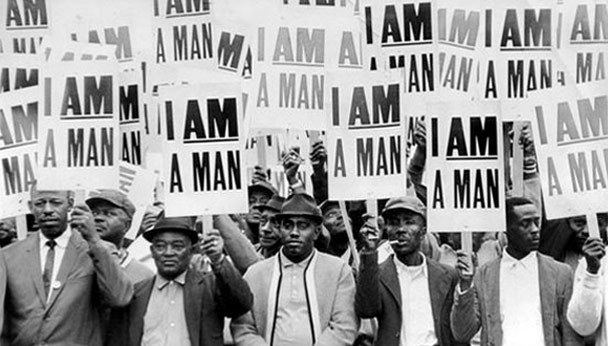 | ||
Causes Racial discrimination faced by black sanitation workersDeath of Echol Cole and Robert Walker from garbage compactorBlack sanitation workers exposed to dangerous working conditions Result Larry Payne killed by police during march and disorderSpeech "I've Been to the Mountaintop" delivered by Martin Luther King, Jr.Assassination of Martin Luther King, Jr. by James Earl Ray on 4 April 1968Union AFSCME local 1733 recognized by City of MemphisIncreased wages for sanitation workers by City of Memphis Location Memphis, Tennessee, United States | ||
Afscme martin luther king documentary i am a man memphis sanitation strike
The Memphis sanitation strike began in February 1968 in Memphis, Tennessee. Following years of poor pay and dangerous working conditions, and provoked by the crushing to death of workers Echol Cole and Robert Walker, over 700 of the 1300 black sanitation workers met on Sunday, 11 February and agreed to strike. They then did not turn out for work on the following day. They also sought to join the American Federation of State, County, and Municipal Employees (AFSCME) Local 1733.
Contents
- Afscme martin luther king documentary i am a man memphis sanitation strike
- Nbc nightly news remembering dr king and the memphis sanitation strike
- Course of the strike
- Media coverage
- Connection to civil rights movement
- Involvement of Martin Luther King Jr
- Roles of the union
- National leadership
- Local unions
- End of the strike
- References
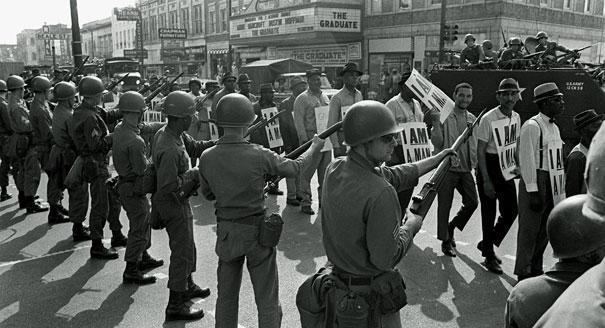
Memphis's mayor, Henry Loeb, declared the strike illegal and refused to meet with local black leaders (he did meet with AFSCME's national officers). Heavily redacted files released in 2012 suggest that FBI monitored the strike and increased its operations in Memphis during 1968.

Nbc nightly news remembering dr king and the memphis sanitation strike
Course of the strike

On Monday February 12, most of the city's sanitation and sewage workers did not show up for work. Some of those who did show up walked off when they found out about the apparent strike. Mayor Loeb, infuriated, refused to meet with the strikers.
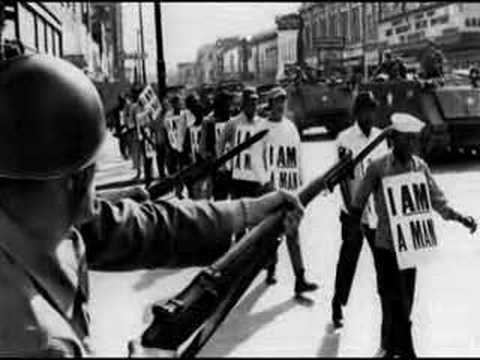
The workers marched from their union hall to a meeting at the City Council chamber; there, they were met with 40–50 police officers. Loeb led the workers to a nearby auditorium, where he asked them to return to work. They laughed and booed him, then applauded union leaders who spoke. At one point, Loeb grabbed the microphone from AFSCME International organizer Bill Lucy and shouted "Go back to work!", storming out of the meeting soon after. The workers declined.
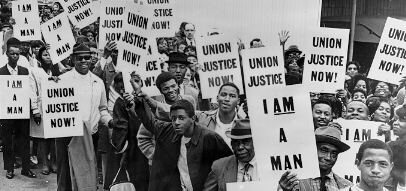
By 15 February, piles of trash (10,000 tons worth) were noticeable, and Loeb began to hire strikebreakers. These individuals were white and traveled with police escorts. They were not well received by the strikers, and the strikers assaulted the strikebreakers in some cases.
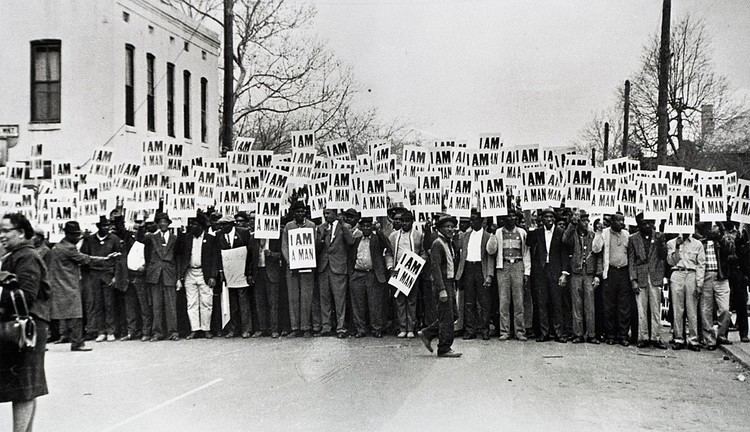
As of 21 February 1968, the sanitation workers established a daily routine of meeting at noon with nearly a thousand strikers and then marching from Clayborn Temple to downtown. The marchers faced police brutality in the forms of mace, tear gas, and billy clubs. On 24 February, while addressing the strikers after a "police assault" on their protests, Rev. James Lawson said, "For at the heart of racism is the idea that a man is not a man, that a person is not a person. You are human beings. You are men. You deserve dignity." Rev. Lawson's comments embody the message behind the iconic placards from the sanitation workers’ strike, "I Am A Man".
On the evening of 26 February, Clayborn Temple held over a thousand supporters of the movement. Rev. Ralph Jackson charged the crowd to not rest until "justice and jobs" prevailed for all black Americans. That night they raised $1,600 from to support the Movement. Rev. Jackson declared further that once the immediate demands of the strikers were met, the movement would focus on ending police brutality, as well as improving housing and education across the city for black Memphians.
Media coverage
The local news media were generally favorable to Loeb, portraying union leaders (and later Martin Luther King, Jr.) as meddling outsiders. The Commercial Appeal wrote editorials (and published cartoons) praising the mayor for his toughness. Newspapers and television stations generally portrayed the mayor as calm and reasonable, and the protesters and organizers as unruly and disorganized.
The Tri-State Defender, an African American newspaper, and The Sou'wester, a local college newspaper, reported the events of the strike from the sanitation workers' perspective. These publications emphasized the brutality of the police reactions to the protestors.
Connection to civil rights movement
From the beginning, strikers refused to erase the racial dimension of the issues at hand. Various speakers from the NAACP addressed the strikers in the union hall. Many of these leaders, including Rev. Samuel Kyles, opposed the alliance with white union leaders who seemed to be riding the strikers' coattails.
Support for the strike in Memphis was divided heavily along racial lines. White scabs increased the workers' resentment. The wider black community became directly involved on Saturday 17 February, with a widely attended meeting at Charles Mason Temple. Bishop J.O. Patterson pledged to help the strikers with food; others present followed his example. On Sunday, 18 February, supporters of the strike visited black churches around the city, successfully garnering more support.
On a 23 February demonstration, police changed their demands midway through the event, leading to conflict with the protesters. On 24 February, black leaders came together to form Community on the Move for Equality (COME).
Due to the efforts of COME, the strike grew into a major civil rights struggle, attracting the attention of the NAACP, the national news media, and Martin Luther King, Jr.
Local clergy members and community leaders also undertook an active campaign, including boycotts and civil disobedience. Civil Rights leaders Roy Wilkins, James Lawson, and Bayard Rustin all participated over the course of the strike.
The strike thus came to represent the broader struggle for equality within Memphis, whose many black residents lived disproportionately in poverty. I Am A Man! emerged as a unifying civil rights theme.
Involvement of Martin Luther King, Jr.
Before he died on 4 April 1968, Martin Luther King, Jr. also took an active role in mass meetings and street actions. He first visited the Memphis strike on 18 March, speaking to an audience of thousands at Mason Temple.
A demonstration on 28 March (with King in attendance) turned violent when some protesters started breaking windows. Some held signs reading "LOEB EAT SHIT". Police responded with batons and tear gas, killing Larry Payne, a sixteen-year-old boy, with a shotgun. Larry Payne’s funeral was held in Clayborn Temple. Despite police pressure to have a private closed-casket funeral in their home, the family held the funeral at Clayborn and had an open casket. Following the funeral the sanitation workers marched peacefully downtown.
Roles of the union
Membership in Local 1733 increased substantially during the course of the strike, more than doubling in the first few days. Its relationship with other unions was complex.
National leadership
The AFSCME leadership in Washington was initially upset to learn of the strike, which they thought would not succeed. P.J. Ciampa, a field organizer for the AFL–CIO, reportedly reacted to news of the strike saying, "Good God Almighty, I need a strike in Memphis like I need another hole in the head!" However, both AFSCME and the AFL–CIO sent representatives to Memphis; these organizers came to support the strike upon recognizing the determination of the workers.
Jones, Lucy, Ciampa, and other union leaders, asked the striking workers to focus on labor solidarity and downplay racism. The workers refused.
Local unions
During the strike, Local 1733 received direct support from URW Local 186. Local 186 had the largest black membership in Memphis, and allowed the strikers to use their union hall for meetings. Most white union leaders in Memphis feared the blackness of the strikers, and expressed concern about race riots. Tommy Powell, president of the Memphis Labor Council, was one of few local white advocates.
End of the strike
King's assassination (4 April 1968) intensified the strike. Mayor Loeb and others feared rioting, which had already begun in Washington, D.C. Federal officials, including Attorney General Ramsey Clark, urged Loeb to make concessions to the strikers in order to avoid violence. Loeb refused. On 8 April, a completely silent march with the SCLC and Coretta Scott King attracted 42,000 participants. The strike ended on 16 April 1968, with a settlement that included union recognition and wage increases, although additional strikes had to be threatened to force the City of Memphis to honor its agreements. The period was a turning point for black activism and union activity in Memphis.
